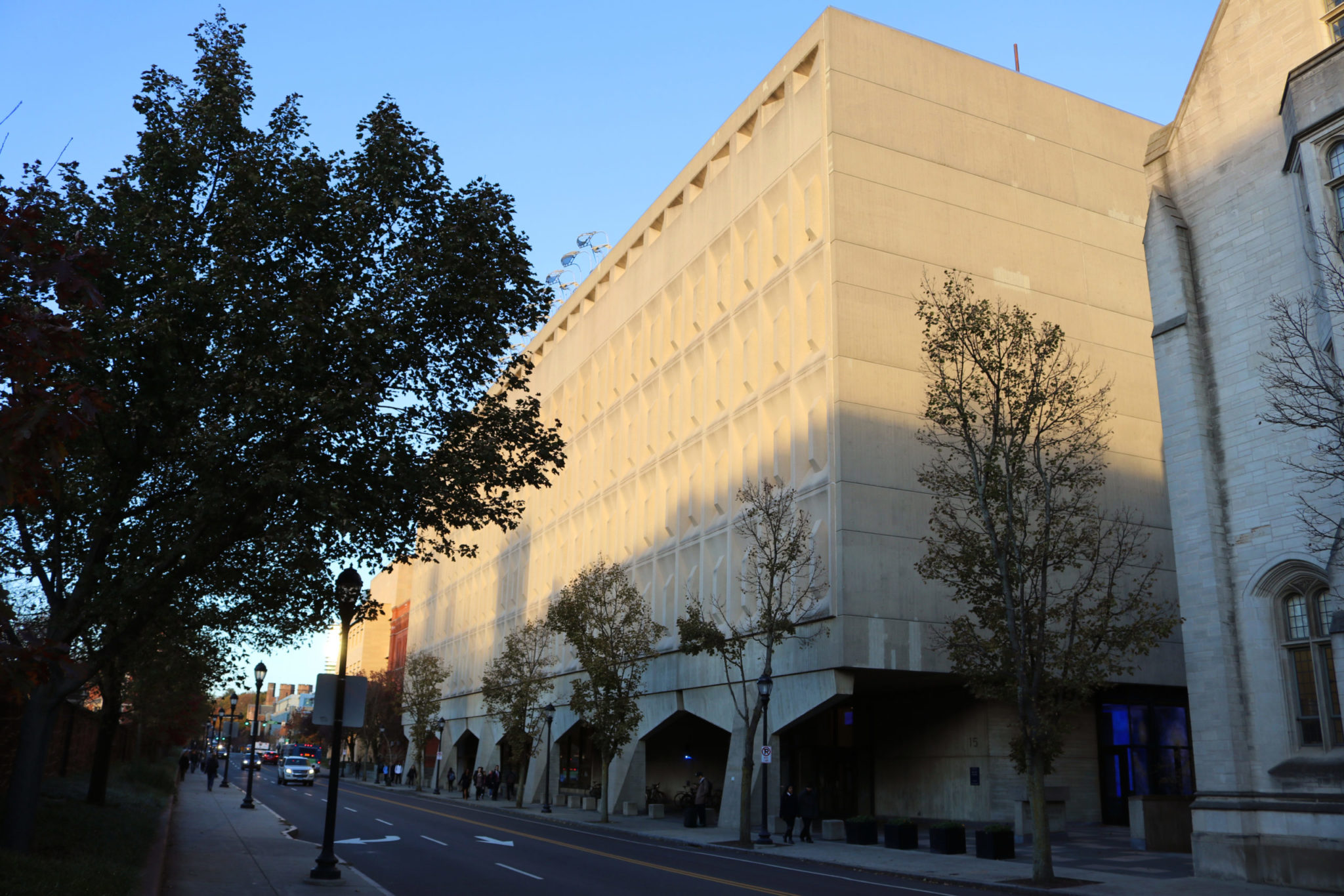Lux et Veritas: Yale physicists calculate the true limit for delivering light to scattering tissue
Yale physicists quantify mathematical limits for depositing energy in a scattered medium, with applications ranging from ultrasonic noninvasive surgery to deep-tissue imaging.

Yale Daily News
Yale physicists developed a novel algorithm that calculates the maximum energy deliverable to a region of scattering tissue, paving the way for light-based medical technologies — including ultrasonic surgery and deep-tissue imaging.
Human tissue is a complex array of atoms and molecules, such that when light is sent through, it scatters into random patterns. Traditionally, electrons are only visible before and after they travel through such a medium, but Nicholas Bender GRD ’21, first author on the paper, and his mentor Hui Cao, John C. Malone professor of applied physics at Yale, developed a new experimental setup that solves this issue. The two-dimensional chip allows researchers to observe light while it travels through tissue without disturbing its path. This experimental model allowed the Yale team, in collaboration with theoretical physics professor Alexey Yamilov from the Missouri University of Science and Technology, to determine the maximal enhancement of energy delivered to a given region, a foundational result for future medical applications of the laser technology. The team’s findings were published in Nature Physics on Jan. 31.
“If you know how deep your tissue is, how large of a region it is, what your laser power is and maybe one or two other things, then you can say: this is how much energy I can get there,” said Bender. “With your laser beam, this is the maximum amount of light you can deliver to the region, and based on that, you can make educated decisions for specific applications.”
Scientists have been researching methods for delivering light to regions of scattering tissue since the 1980s, according to Yamilov, but until now the fundamental physical limit for energy delivery had not been known. Through the novel algorithm, future biologists and doctors can determine whether specific tasks, such as blasting a tumor, are possible, or if the energy requirement is too great at the given depth, region area or laser strength.
Bender proposed the analogy of pretending there is something inside the Constitution. The paper is a disordered medium, but it is priceless and therefore can not be disturbed. This algorithm provides the tools for researchers to send light through the medium, enhance it on a specific cross section of the interior of the document and eventually use the feedback from that process to image what is inside.
Developing this novel algorithm was only possible because of the unique experimental setup that was developed at Yale.
“We were able to have information that is usually not accessible to any other experiment because we were looking inside a scattering medium while the light was still propagating,” said Yamilov. “Usually if you want to look inside scattering media you perturb the process of scattering.”
The setup involved a two-dimensional chip that was specially designed so that the vast majority of photons, or light particles, stay within the plane, randomly propagating through the mock tissue. Meanwhile, a small minority of photons that reflect off and are observed by the scientists provide information about the light’s path. The waves that leave the plate interact with waves of known wavelength and amplitude, so that the exact point in their cycling can be determined. This wave interaction is not possible in a three-dimensional system, and therefore the chip-based experiment had to be generalized into three dimensions through computer simulations.
The key to this experiment is it supports observing light while it travels through a medium, a previously unaccomplished feat. This is crucial if one, for instance, wishes to excite a single neuron in the middle of the brain, hiding behind many layers of tissue. Additionally, the setup supports analyzing and enhancing the signal of entire regions. The region of a neuron is much larger than the wavelength of a laser’s light, which shows that the laser’s focus must be broadened to encompass a larger area.
“Let’s say we want to go through tissue to excite a single neuron,” said Cao, while reflecting on the importance of the energy delivery limit. “If we know how much energy gets through the tissue, this will be important for us to know if it is doable. For a given energy input, do we have enough energy at our target to blast something or trigger something or whatever we wish to do?”
The researchers have determined what is possible within the laws of physics. Now, it is up to the engineers and biologists of the future to work within their specialties and these energy deliverance constraints.
Future applications include ultrasonic noninvasive surgeries, exciting neurons and deep-tissue imaging. While these are far-reaching goals, the field is moving at a very fast pace, and knowledge of energy enhancement limits will propel future advancements, according to Cao.
“This limit creates the goalposts that everyone should be aiming at,” said Yamilov. “That is its value. We hope it spurred technological and practical interest in this problem.”
After the original paper was submitted for publication, one of the article’s reviewers, Oluwafemi S. Ojambati from the University of Twente, Enschede, Netherlands, wrote a Nature Physics News & Views story about it, as is often done for the journal’s most progressive scientific advancements. It was published Jan. 31.
Nicholas Bender earned his doctorate in applied physics from Yale in 2021 and is now a postdoctoral researcher at Cornell University.







